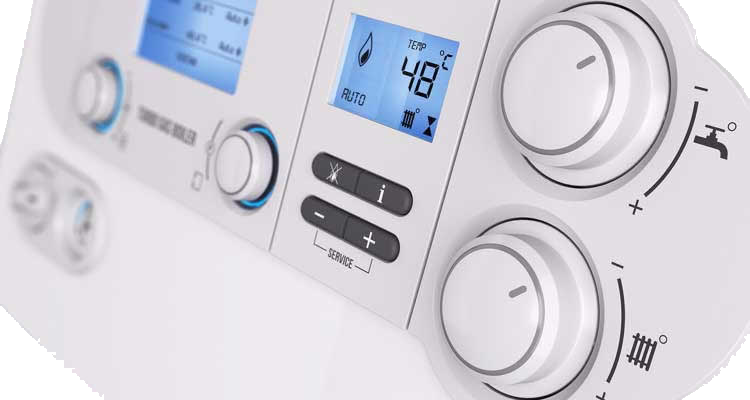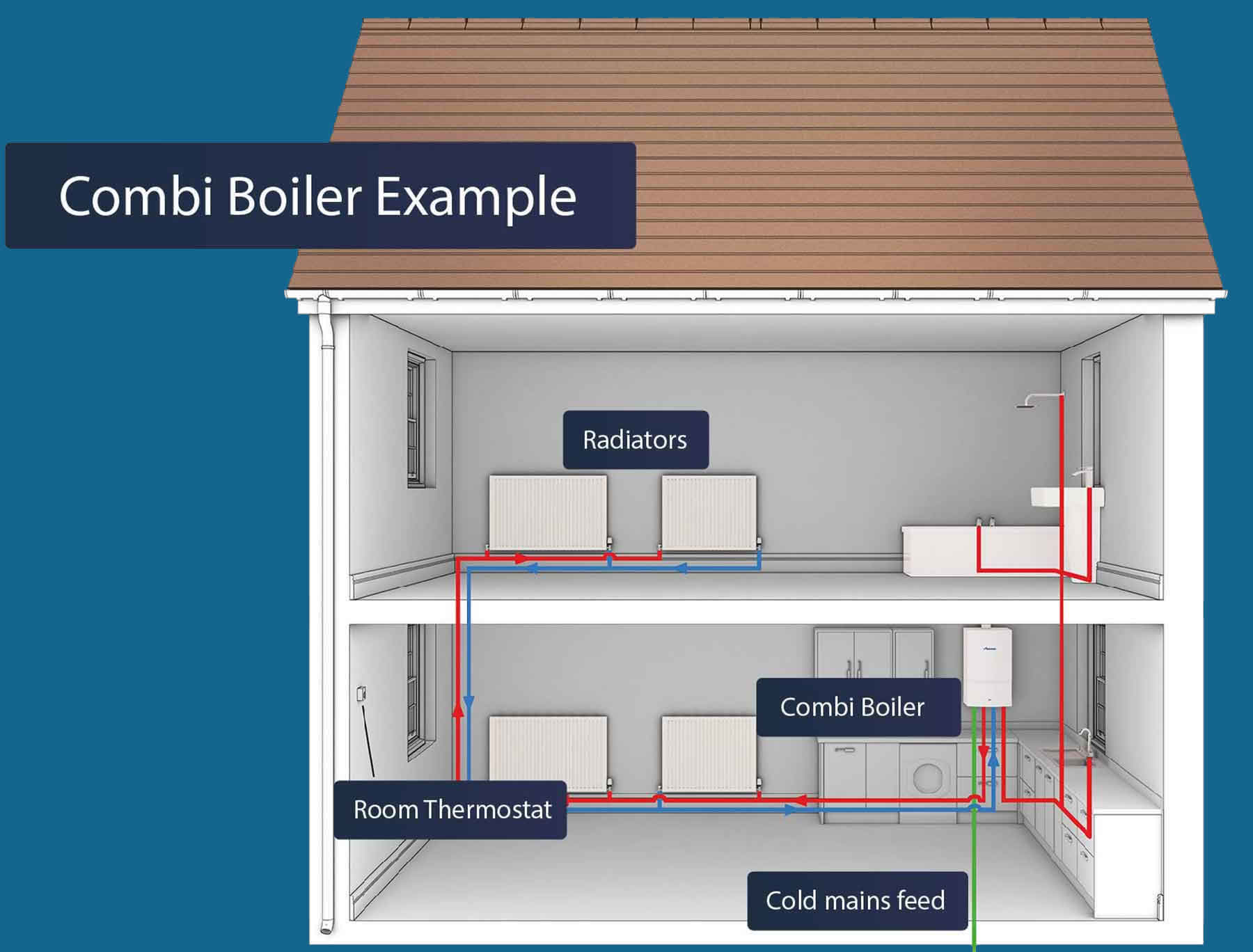Combination or combi boilers as they are commonly known are the most commonly fitted type of boiler in the UK accounting for approximately 70% of UK boiler sales. Combi boilers are now all condensing boilers.

Combi boilers remove the need for a cold water storage cistern, feed and expansion tank and a hot water cylinder as the provide both the hot water and central heating directly.
Combination boilers tend to have a higher kilowatt rating than their heat only or system boiler counterparts. This is because a high capacity is required to generate the instantaneous hot water. The higher kilowatt rating is often more than is required to heat the property but thankfully modern boilers are able to adjust their performance to allow for this.
Combi boilers have a number of advantages.

They do not heat stored water in a hot water cylinder unnecessarily. There is a constant supply of hot water without the fear of running out. A considerable space saving is achieved as a hot water cylinder is no longer required. Because there is no longer a cold water storage cistern or a feed and expansion tank, no stored water is required, removing a potential leak and freezing risk.
Combi boilers do have disadvantages.
If the boiler fails then there is no hot water and heating! If you have a hot water cylinder it is likely you will have an immersion heater as back up to provide hot water.
The maximum flow of hot water from a combi boiler is limited. In larger properties with multiple hot water outlets or where there is more than one thermostatic shower the combi boiler may struggle to provide the requisite amount of hot water. In this case you should have a detailed discussion with your engineer about the best route forward.
Conclusion
As there are pros and cons regarding combination boilers, it is important to explore every avenue with your engineer to make sure that your needs will be fulfilled by installing a combi boiler.